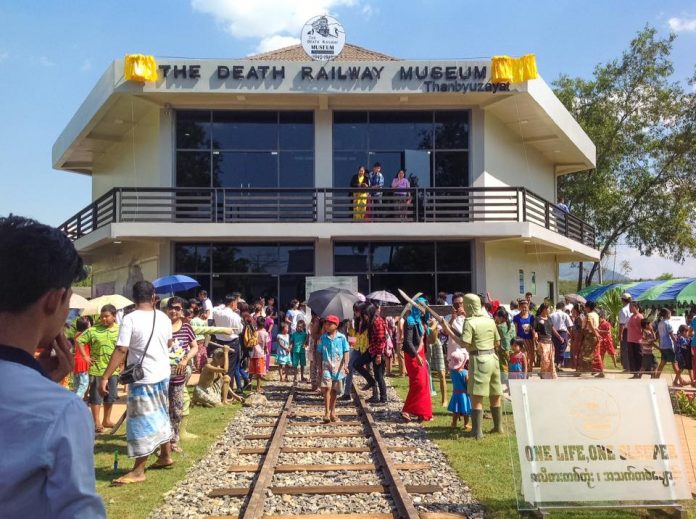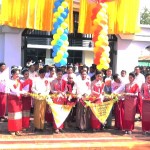The Thai-Burma Railway Museum opened its doors on the afternoon of January 4 in Thanbyuzayat Town, Mon State.
Mon State’s Chief Minister U Ohn Myint led the opening ceremony of a museum commemorating the Thai-Burma Railway, also known as the Death Railway, constructed during World War II. The event drew roughly 300 people including State Hluttaw Chairman U Kyin Pe, Minister for Development Affairs Dr. Toe Toe Aung, state-level ministers and officials, and staff of the Tala Mon Company Ltd.
“I am very proud to attend this opening ceremony of this museum to acknowledge and document the lives of the more than 80,000 people lost here in the past,” said Chief Minister U Ohn Myint during his welcome speech.
According to Min Banyar San, the chairman of Tala Mon Co. Ltd, the Mon State government in October 2014 granted the company the sole right to construct facilities including a hotel, restaurant, and museum. The Tala Mon Company reportedly broke ground shortly after.
“We do this museum project under the direction of the chief minister. We only began the project once our bid was approved and under the administration of the state minister and state government,” said Min Banyar San.
Min Banyar San added that the complex is divided into three parts including the museum, its related services like souvenir shops, and other large facilities for accommodation and activities including a hotel, reception hall for weddings and events, and shopping.
At the ceremony, Mon traditional dances were performed and state government officials and attendees were able to view a World War II-era Japanese steam-engine train on display at the museum and Japan Pagoda, built to commemorate those who lost their lives in Wae Ton Chaung Village.
Starting in November 1942, the occupying Japanese army forced tens of thousands of prisoners of war to construct a 250 mile-long railway connecting Thailand’s Kanchanaburi Province to Mon State’s Thanbyuzayat Township. Toiling in harsh conditions and with little or no medical treatment, many laborers suffered from sickness, malnourishment and exhaustion, resulting in thousands of deaths. A ceremony marking completion of the railway was held on October 25, 1943, according to recorded documents.
Among those forced to labor on the railway’s construction, it is estimated that more than 80,000 ethnic people from Burma and over 10,000 prisoners of war from the Allied Forces were among those who lost their lives.



